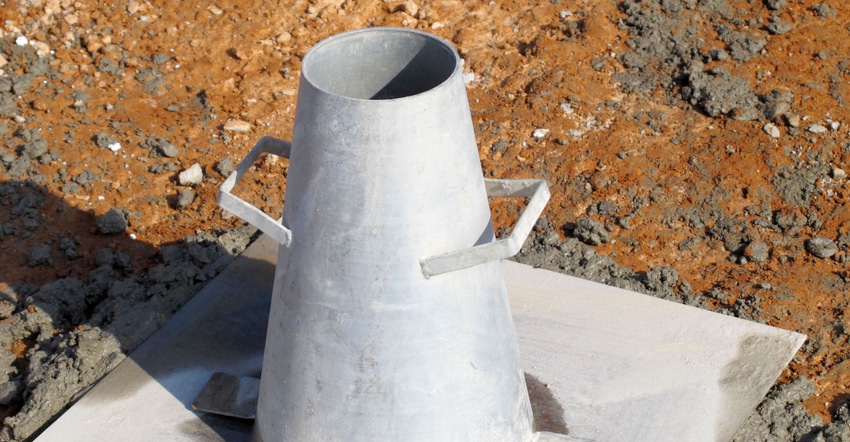Concrete Slump Test Garners New Critics
The concrete slump test has been an indicator of quality. Some experts say that is no longer the case.

The slump test has long been used to determine concrete’s consistency, but some industry leaders claim the test is outdated and serves as a poor indicator of modern concrete’s workability.
The traditional slump test, in which concrete is poured into a cone that is then lifted to measure the distance the material settles, came under fire during a session titled “What’s Holding Back Productivity” at the ACI’s April convention in San Francisco.
“I’m an anti-slump guy. I don’t like the slump test,” said Terry Harris, a technical service director for GCP. “I think specifying slump is a bad idea because slump is not an indicator of quality.”
He said concrete contractors should be able to order whatever slump they want, within a range, because they need consistency.
Harris was part of a panel of experts that included representatives from material suppliers, concrete contractors, a designer and a project owner.
He said contractors know what they need, so the decisions should be left up to them.
“We also waste time by rejecting loads that are perfectly fine,” Harris said.
Jim Mack, director of market development for CEMEX, agreed and said the slump test should be eliminated because it “slows stuff down” and causes loads of concrete to get rejected.
Mack said that once trucks are sent away from a jobsite to discard rejected concrete, they’re out of the site’s delivery rotation for a considerable period of time, which slows down productivity.
He said technological tools, like Verifi, a GCP system that uses sensors to provide real-time monitoring data for ready-mix trucks, should be enough to verify the quality of materials without the need for a slump test.
“Right now, not every producer has it, but even when you do have it you still have to do the testing,” he said. “It would be nice if (Verifi) was an acceptable process (for testing).”
Cary Kopczynski, a designer and senior principal of Cary Kopczynski & Company, also favors rethinking the slump test. He said long ago slump tests were a measure of water content.
“Slump once was an indicator of quality. It no longer is. The only important thing about slump is that it be held relatively consistent from truck to truck,” Kopczynski said.
ASTM C143, which defines the standard test method for slump, “was originally developed to provide a technique to monitor the consistency of unhardened concrete,” according to the ASTM’s website.
The website said care should be taken when it comes to relating slump test results obtained under field conditions to strength.
“Under laboratory conditions, with strict control of all concrete materials, the slump is generally found to increase proportionally with the water content of a given concrete mixture, and thus to be inversely related to concrete strength. Under field conditions, however, such a strength relationship is not clearly and consistently shown.”
About the Author(s)
You May Also Like




